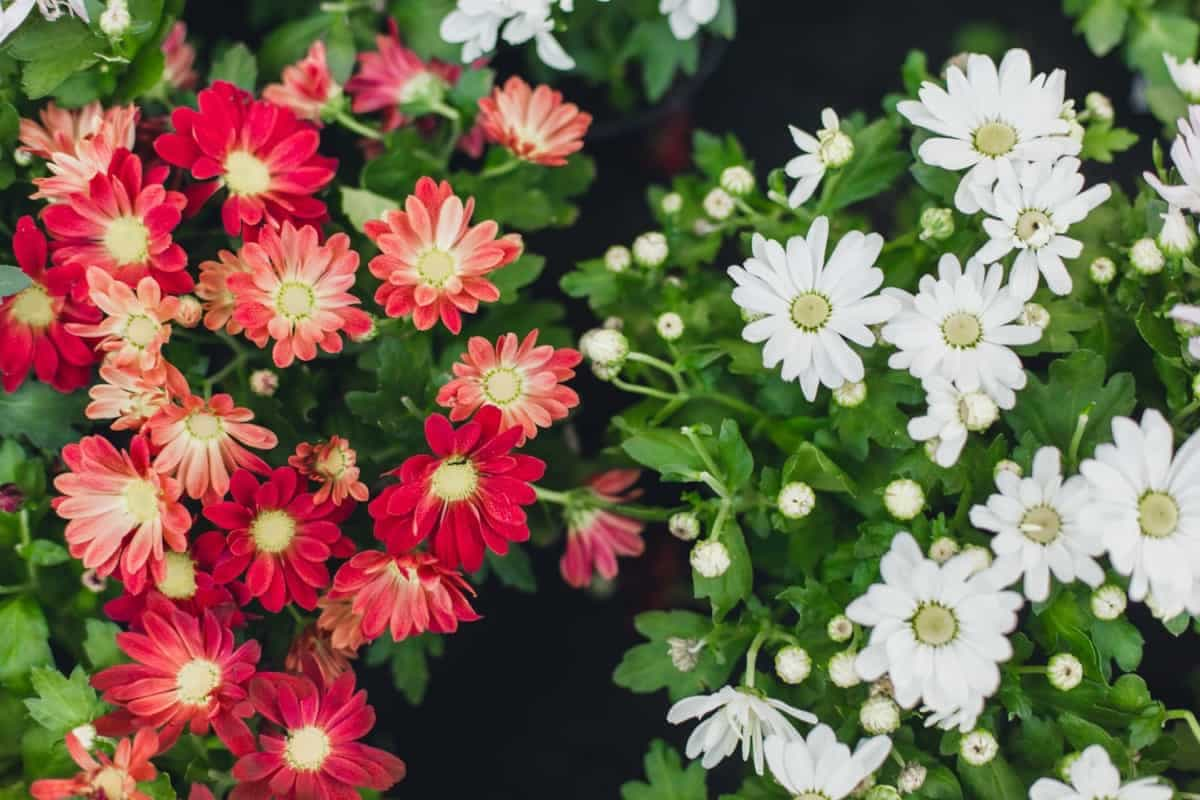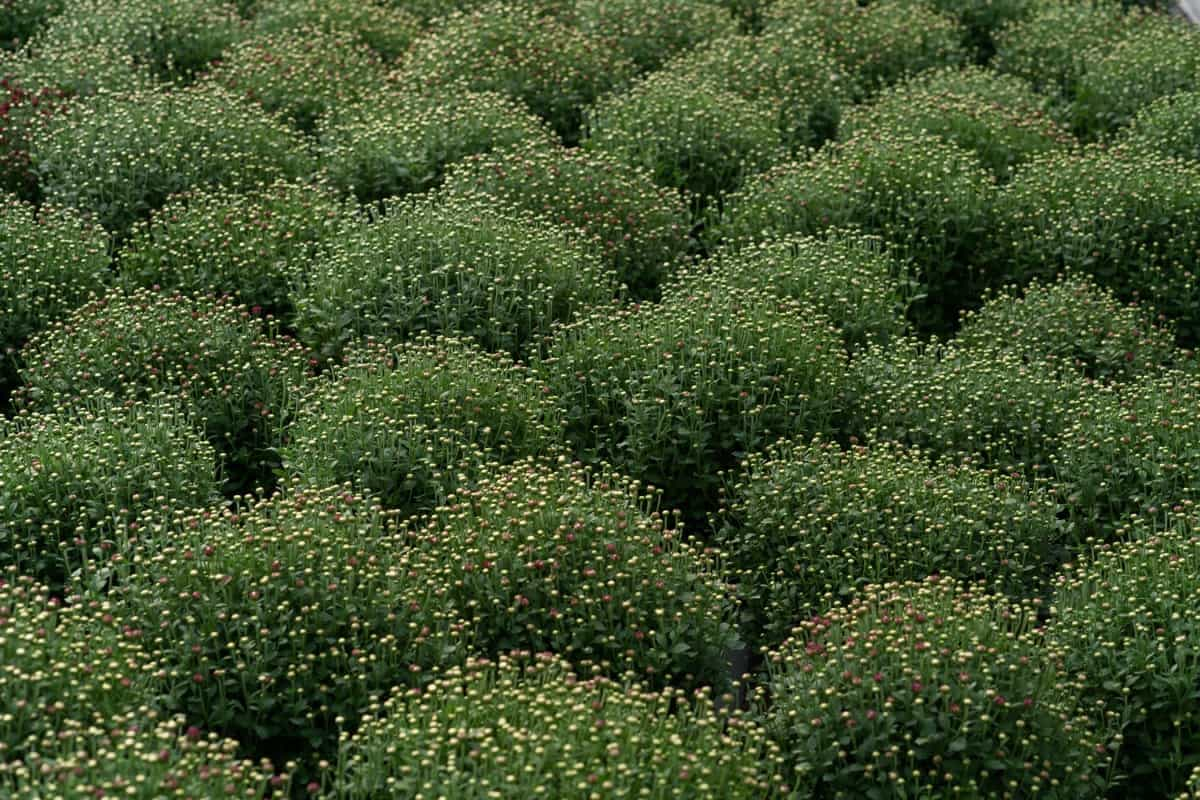Chrysanthemums, commonly known as mums, are popular among gardeners and flower enthusiasts. It is easy to grow and care for these beautiful, colorful flowers, so they are perfect for novice gardeners. This guide will go over the step-by-step process of planting, growing, and caring for chrysanthemums.

How to Plant and Care for Chrysanthemums
Step-by-Step Guide to Planting Chrysanthemums in Your Garden
- Choose the Right Location: Choose a location in your garden with at least six hours of sunlight daily. Make sure to choose a location that has good drainage.
- Prepare The Soil: Dig up the soil of at least 12 inches deep and remove any weeds, rocks, or debris. Mix compost or manure into the soil to improve its fertility.
- Planting: Dig a hole to accommodate the root ball of the chrysanthemum plant. Place the seedling in the hole and fill it with soil, ensuring the top of the root ball is level with the ground.
- Watering: After planting the chrysanthemum, water it thoroughly to help settle the soil. Make sure to water the plant regularly, especially during dry periods.
- Add Support: Depending on the type of chrysanthemum you are planting, you may need to add support to keep the plant upright. Use stakes or a trellis to support the plant.
- Apply Fertilizer: Chrysanthemums require regular fertilization to thrive. Apply a balanced fertilizer like N:P:K 10-10-10 every 4-6 weeks during the growing season.
- Prune: To encourage bushy growth and more blooms, pinch off the top inch of the plant’s stem when it reaches a height of 6 inches. Remove dead or diseased leaves or branches throughout the growing season.
Choosing the Ideal Soil and Location for Planting Chrysanthemums
Soil
Chrysanthemums prefer well-draining soil that is rich in organic matter. The ideal pH level for chrysanthemums is between 6.0 and 7.0. Add lime to increase the pH level if your soil is too acidic. On the otherhand, add sulfur to lower the pH, if the soil is too alkaline. Chrysanthemums also prefer soil that is slightly moist but not soggy. To improve soil drainage, you can add compost or sand.
Location
Chrysanthemums require at least 6 hours of direct sunlight per day. They also prefer a location sheltered from strong winds, as their blooms can be easily damaged. When choosing a location, consider the proximity to other plants, as chrysanthemums can be susceptible to disease.
Watering Techniques for Healthy and Abundant Chrysanthemum Blooms
- Watering Frequency: Chrysanthemums require regular watering to maintain health and promote blooming. Water the plants deeply once a week, especially during the hot summer months. If the soil is dry, it’s time to water the plants.
- Watering amount: Water the plants deeply until the water reaches the roots. Ensure that the soil is well-drained and does not become waterlogged. Overwatering lead to root rot, which can damage the plant.
- Watering time: Chrysanthemums should be watered early in the day to allow the foliage to dry off before nightfall. Early morning watering schedule allows the plant to absorb the water before the day’s heat.
- Watering method: Chrysanthemums prefer to be watered from the base of the plant rather than from overhead. Use a watering can or a drip irrigation system to water the plants at the base.
- Water quality: Use clean, fresh water to water the plants. Avoid using hard water or high salt content, as it can damage the plant.
In case you missed it: 9 Causes of Dying Chrysanthemum Plants and How to Fix Them?

Growing Chrysanthemums from Cuttings: A Beginner’s Tutorial
- Cut a branch from a healthy chrysanthemum plant. You should cut a piece that is 4 to 6 inches long and have a couple of sets of leaves.
- Only the top leaves should remain after removing the lower leaves.
- To encourage root growth, dip the cutting in the rooting hormone.
- Plant the cutting, well-draining soil in a pot. Don’t let the soil become soggy, but keep it moist.
- Put a plastic bag over the pot to create a greenhouse effect. By doing this, you will be able to keep the cutting warm and moist.
- Keep the pot out of direct sunlight but in a bright spot.
- Every few days, mist the soil with water to keep it moist.
- Once the cutting has rooted, remove the plastic bag and continue caring for the plant as you would for any other chrysanthemum.
Pruning and Pinching Chrysanthemum Plants for Better Branching and Flower Production
Pruning and pinching are essential techniques for maintaining healthy and productive chrysanthemum plants. Pruning involves removing old or dead growth from the plant. To prune your chrysanthemums, use a pair of sharp pruning shears to cut back any dead or yellowing leaves, stems, or flowers.
Pinching is a technique where the tips of the branches are removed to encourage branching and more flowers. To pinch your chrysanthemums, use your fingers or scissors to remove each stem’s top inch or two. It promotes the plant to produce more branches and buds, resulting in a fuller, more abundant display of flowers.
Protecting Chrysanthemums From Pests and Diseases: Prevention and Treatment
Prevention is the first line of defense against pests and diseases. Keeping your chrysanthemums healthy and strong will help them resist pests and diseases. Here are some prevention tips:
- Plant your chrysanthemums in well-draining soil and provide adequate water and nutrients. This will help them grow strong and healthy.
- Keep your garden clean and tidy. Remove any dead or diseased plant material, which can attract pests and diseases.
- Mulch around your chrysanthemums with organic matter, such as compost or shredded leaves. This will retain moisture and suppress weeds.
If prevention fails and your chrysanthemums become infested with pests or infected with a disease, take action quickly to prevent further damage. Here are some treatment options:
- Insecticidal soap: It is a safe and effective treatment for many pests, including aphids, spider mites, and whiteflies. Spray the affected plants with insecticidal soap according to the instructions on the label.
- Neem oil: This is another safe and effective treatment for pests and some fungal diseases. Mix neem oil with water according to the instructions on the label and spray the affected plants.
- Fungicide: A fungicide may be necessary if your chrysanthemums are infected with a fungal disease, such as powdery mildew or botrytis. Follow the dosage recommendations on the product for the application.
- Pruning: If a plant is heavily infested or infected, it may be necessary to prune away the affected parts. Sterilize the pruners with rubbing alcohol before and after use.
Fertilizing Chrysanthemums: Nutrient Requirements and Feeding Schedule
Chrysanthemums require a balance of macronutrients and micronutrients to grow and thrive. The macronutrients required by chrysanthemums are nitrogen (N), phosphorus (P), and potassium (K). In addition to macronutrients, chrysanthemums require micronutrients such as iron, boron, zinc, and magnesium. These nutrients are essential for the plant’s metabolic processes and enzyme functions.
The feeding schedule will vary based on the growth stage of the plant. During the vegetative stage, leaf and stem growth period, chrysanthemums require a fertilizer with high nitrogen content. A fertilizer with an N-P-K ratio of 3-1-2 is suitable for this stage. The plant should be fertilized every two weeks during this stage. During the flowering stage, chrysanthemums require a fertilizer with a higher phosphorus content. A fertilizer with an N-P-K ratio of 1-2-1 is suitable for this stage. The plant should be fertilized once a week during this stage.
In case you missed it: How to Make Chrysanthemums Bushy: Best Homemade Fertilizers, Composting, and Pruning Tips

Understanding the Blooming Season of Chrysanthemum Flowers
Chrysanthemums typically bloom in the fall, although some varieties can also bloom in the summer. The exact blooming season will depend on the specific variety of chrysanthemums you are growing and the climate in your area. If you want to ensure that your chrysanthemums bloom at the right time, plant them at the right time. Chrysanthemums should be planted in the spring or early summer so they have time to establish themselves before the blooming season begins.
Overwintering Chrysanthemums: Winter Care and Protection
- Cut back the stems: Once the chrysanthemums have finished blooming, cut back the stems to about 2 inches above the ground level.
- Add mulch: After cutting back the stems, add a layer of mulch around the plant. This will insulate the roots and protect them from harsh winter temperatures.
- Cover the plant: To protect the chrysanthemums further, cover the plant with a breathable material such as burlap or frost cloth.
- Water the plant: Water the chrysanthemums thoroughly before the ground freezes. This will help ensure the plant has enough moisture to survive the winter.
- Remove cover in the spring: Once the danger of frost has passed, remove the cover from the chrysanthemums.
Conclusion
In conclusion, chrysanthemums are beautiful flowers that are easy to grow and care for. Following these instructions, you can successfully plant, grow, and care for your chrysanthemums and enjoy their colorful blooms for years.
- Feed Your Flock for Less: Top 10 Tips to Save on Chicken Feed
- Ultimate Guide to Ossabaw Island Hog: Breeding, Raising, Diet, and Care
- Hatching Answers: The Top 10 Reasons Your Chickens Aren’t Laying Eggs
- Eggs and Economics: Breaking Down the Cost of Raising Backyard Chickens
- Defend Your Greens: Proven Methods to Keep Iguanas Out of Your Garden
- Ultimate Guide to Cinnamon Queen Chicken: A Comprehensive Guide for Beginners
- Ultimate Guide to California Tan Chicken: Breeding, Raising, Diet, Egg-Production and Care
- Ultimate Guide to Marsh Daisy Chicken: Breeding, Raising, Diet, and Care
- 10 Types of Chicken Farming Businesses You Can Start for Profits